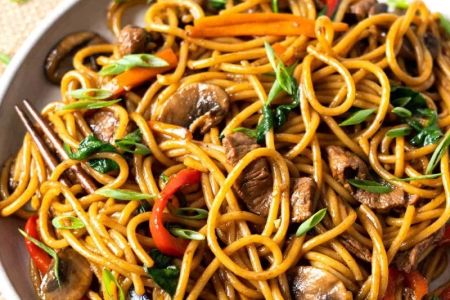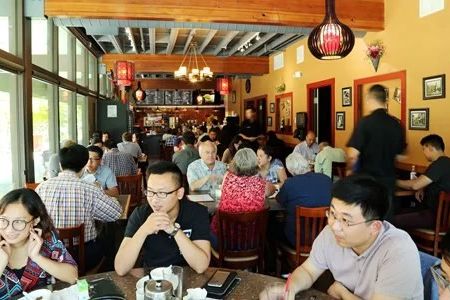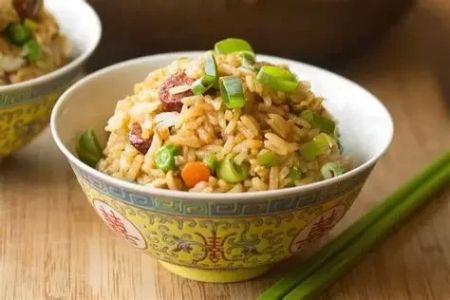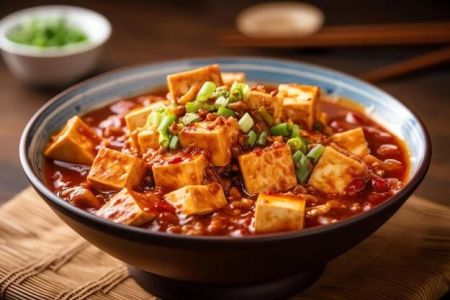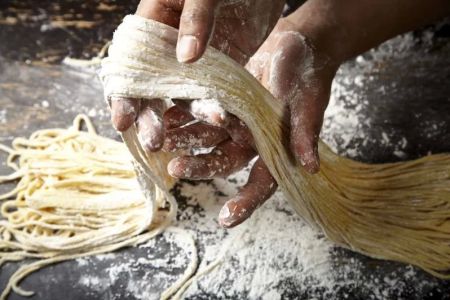- what-is-moo-goo-gai-pan - What Is Moo Goo Gai Pan and Why Is It So Popular?
- key-ingredients-and-substitutes - Key Ingredients and Smart Substitutes
- cooking-techniques-for-authentic-flavor - Cooking Techniques for Authentic Flavor
- step-by-step-recipe-guide - Step-by-Step Guide to Making Moo Goo Gai Pan at Home
- real-kitchen-story - A Real Kitchen Story: First-Time Success
- expert-tips-and-presentation - Expert Tips and Presentation Ideas
- where-to-find-quality-ingredients - Where to Find Quality Ingredients Online
1. What Is Moo Goo Gai Pan and Why Is It So Popular?
Moo Goo Gai Pan (蘑菇雞片), literally translated as "mushroom chicken slices," is a Cantonese-American stir-fry dish known for its light, savory sauce and crisp vegetables. Unlike many heavier takeout items, Moo Goo Gai Pan is clean, simple, and healthy—featuring sliced chicken breast, mushrooms, and an array of colorful vegetables all tossed in a mild white sauce.
It became popular in the U.S. in the mid-20th century, largely due to its subtle flavors that appealed to a wide audience. Today, it's a staple in American Chinese restaurants, offering a perfect entry point for those new to Chinese cuisine.
2. Key Ingredients and Smart Substitutes
2.1 Chicken: The Star of the Dish
Traditional Moo Goo Gai Pan uses boneless, skinless chicken breast for a lean and tender texture. Thin slicing ensures quick cooking and a silky mouthfeel. You can also use chicken thigh for a richer taste.
2.2 Mushrooms: More Than Just “Moo Goo”
While white button mushrooms are common, you can upgrade with shiitake or oyster mushrooms for deeper umami. Just ensure they're sliced thinly and evenly.
2.3 Vegetables: Add Color and Crunch
Classic vegetables include snow peas, bamboo shoots, carrots, and water chestnuts. Don’t hesitate to improvise with baby corn, broccoli, or bell peppers if needed. These variations still keep the essence intact.
2.4 Sauce: Light Yet Flavorful
The signature white sauce is made with chicken broth, soy sauce, oyster sauce, Shaoxing wine, and cornstarch. It’s light but savory, subtly coating each bite without overpowering it. Low-sodium soy sauce works well for those watching their salt intake.
2.5 Smart Substitutes
If you’re out of oyster sauce, mushroom soy sauce is a great vegan-friendly alternative. Cornstarch can be replaced with arrowroot powder in a pinch.
3. Cooking Techniques for Authentic Flavor
3.1 Velvet the Chicken
One secret to authentic Moo Goo Gai Pan is “velveting”—marinating chicken in egg white, cornstarch, and rice wine before a quick blanch or stir-fry. This process locks in moisture and creates that restaurant-style tenderness.
3.2 Wok Hei Matters
Using a wok over high heat helps achieve that elusive “wok hei”—the smoky, charred essence you get from stir-frying at high temperatures. If you don’t have a wok, use a heavy skillet and cook in batches to avoid steaming the food.
3.3 Timing is Everything
Prepare all ingredients beforehand. The cooking itself only takes a few minutes, so there’s no room for chopping or searching for sauces once you start. Mise en place is your best friend here.
4. Step-by-Step Guide to Making Moo Goo Gai Pan at Home
4.1 Ingredients You'll Need:
- 1 lb chicken breast (thinly sliced)
- 1 egg white
- 1 tbsp cornstarch
- 1 tbsp Shaoxing wine
- 1 cup sliced mushrooms
- 1/2 cup sliced carrots
- 1/2 cup snow peas
- 1/4 cup bamboo shoots
- 1 tbsp soy sauce
- 1 tbsp oyster sauce
- 1/2 cup chicken broth
- Salt, white pepper to taste
4.2 Cooking Instructions:
- Velvet the chicken: Mix chicken slices with egg white, cornstarch, and wine. Let sit for 20 minutes.
- Heat oil in a wok. Quickly stir-fry the chicken until half-cooked. Remove and set aside.
- Stir-fry vegetables until tender-crisp.
- Add chicken back in, along with broth, sauces, and seasonings. Stir until sauce thickens slightly and everything is cooked through.
5. A Real Kitchen Story: First-Time Success
Emily, a home cook from Seattle, tried Moo Goo Gai Pan for the first time after craving something light but satisfying. “I never thought I could make Chinese food at home that tasted better than takeout,” she says. Her biggest win? Discovering that velveting made a huge difference. “It was my boyfriend’s new favorite, and now I make it weekly.”
Stories like Emily’s show that with the right ingredients and techniques, even beginner cooks can master dishes that feel like they came from a restaurant kitchen.
6. Expert Tips and Presentation Ideas
6.1 Don’t Overcook the Chicken
The beauty of this dish lies in its tenderness. Overcooking leads to dry, chewy chicken. Pull it off the heat as soon as it’s opaque and cooked through.
6.2 Serve with Steamed Jasmine Rice
While Moo Goo Gai Pan is light and vegetable-rich, it shines best when paired with fluffy jasmine rice or even brown rice for extra fiber.
6.3 Garnish Matters
A sprinkle of chopped scallions or a dash of sesame oil right before serving enhances aroma and gives a more authentic finish.
7. Where to Find Quality Ingredients Online
Finding authentic ingredients can be tricky depending on where you live. That’s why our platform, Chinese Food, curates high-quality sauces, rice wines, and traditional Chinese produce to help you make your favorite dishes at home. Whether you’re looking for premium Shaoxing wine or wok-ready vegetables, Chinese Food provides reliable and convenient shopping with selections trusted by professional chefs and home cooks alike.
Skip the guesswork and make your cooking experience smoother—especially for dishes like Moo Goo Gai Pan, where freshness and authenticity count.



